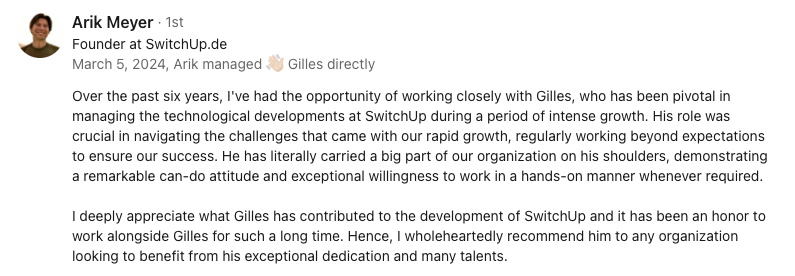Abstract:
Python automation is a transformative tool for businesses, streamlining processes, reducing errors, and enhancing productivity. With its versatile and easy-to-learn nature, Python allows developers to automate repetitive tasks, freeing up time for strategic initiatives. Python scripting is particularly effective for automating tasks and data analysis, while frameworks like Flask and Django empower technology leaders to build and manage large-scale applications more efficiently. The symbiotic relationship between Python frameworks and enterprise automation drives success and innovation, enabling organizations to navigate the technology landscape and achieve enterprise-wide transformation. Embracing Python automation and frameworks can empower teams, streamline processes, and drive innovation for long-term success.
Harnessing Python Automation for Enterprise Success: A Chief Technology Officer's PerspectiveThe Power of Python Automation
In my tenure as a Chief Technology Officer, I've witnessed the transformative power of Python automation in streamlining business processes, reducing human error, and enhancing overall productivity. Python, a versatile and easy-to-learn programming language, enables developers to automate repetitive tasks, enabling the workforce to focus on creative and strategic initiatives.
Python Scripting: A Powerful Productivity Tool
Python scripting is an effective method for automating tasks that would otherwise consume precious employee hours. From automating data collection and analysis to streamlining software testing, Python is an invaluable ally in our pursuit of operational efficiency. With a rich ecosystem of libraries and frameworks, Python has become the go-to language for enterprise automation, allowing developers to quickly and easily create powerful scripts that can be integrated into existing workflows.
Case in Point: Python Automation at Work
Consider the example of a Director of Engineering who seeks to automate the process of deploying new software updates across the organization's infrastructure. Using Python, the Director of Engineering can create a script that automates the build, test, and deployment process, ensuring consistency, speed, and accuracy while eliminating the potential for human error. This not only saves time but also increases the overall quality of the deployment process and enables the team to focus on more pressing matters.
Python Frameworks: Empowering Directors of Technology and Engineering
Python frameworks, such as Flask and Django, are essential tools for Directors of Technology and Engineering when building and managing large-scale applications. These frameworks provide a solid foundation for developing web applications, APIs, and other services that are integral to modern enterprise infrastructure. By leveraging the power of Python frameworks, these technology leaders can significantly reduce the time and effort required to build and maintain complex systems, allowing them to focus on strategic objectives and innovation.
A Symbiotic Relationship: Python Frameworks and Enterprise Automation
Python frameworks and enterprise automation are closely intertwined, as the latter often relies on the former to provide robust, scalable solutions to business challenges. For instance, a Director of Technology might employ a Python framework to build a data processing pipeline that automates the analysis of large, disparate data sets. By doing so, the organization can gain valuable insights and make informed decisions, all while reducing the manual burden on its employees.
Empowering Directors of Engineering: Leveraging Python Frameworks for DevOps Excellence
Directors of Engineering can also harness Python frameworks to improve their DevOps processes. By incorporating these tools into their workflows, they can streamline application development, testing, and deployment, ultimately leading to higher-quality software and greater agility in responding to business needs. This symbiotic relationship between Python frameworks and enterprise automation is a powerful force that, when wielded effectively, can drive success and innovation in organizations of all sizes.
From Director of Engineering to Chief Technology Officer: Navigating the Technology Landscape
As a Chief Technology Officer, I have seen firsthand the impact of Python automation and Python frameworks on my organization and the industry as a whole. By embracing these technologies, I have been able to cultivate a culture of innovation, operational efficiency, and strategic alignment, ultimately driving business growth and success.
The Role of Python Automation in Enterprise-wide Transformation
In my experience, Python automation has been a vital catalyst for enterprise-wide transformation, enabling organizations to reap the benefits of digital transformation. From reducing the burden of manual processes to enabling faster, more informed decision-making, Python automation has proven to be an invaluable tool for technology leaders seeking to navigate the complex, rapidly changing landscape of modern business.
By incorporating Python automation and Python frameworks into your organization's technology strategy, you can empower your team, streamline processes, and drive innovation, ultimately setting the stage for long-term success and growth in an increasingly competitive world. Embrace the power of Python and unlock the potential of your organization, propelling yourself and your team to new heights of achievement and impact.
You might be interested by these articles:
- Python and DevOps: A Guide to CI, Automation, and Roles
- Leveraging Python in Modern Software Development
- Mastering GDPR compliance for startup success with Python





